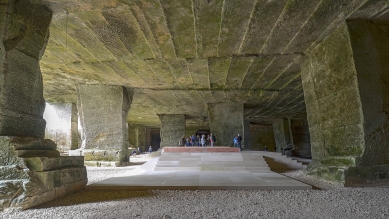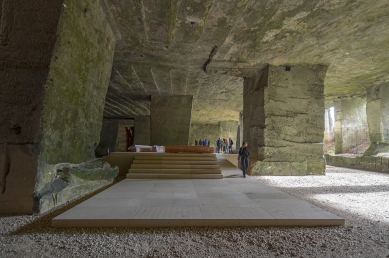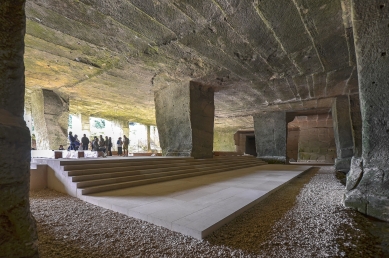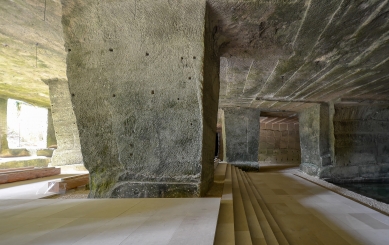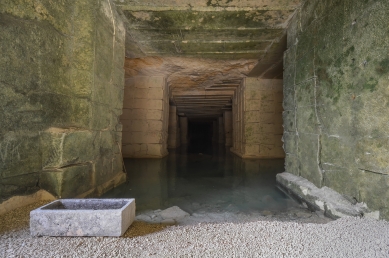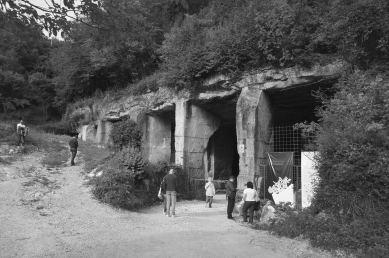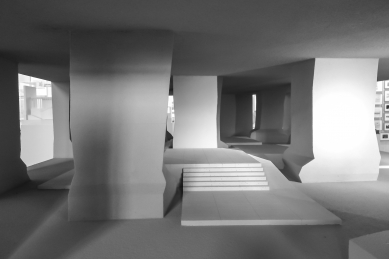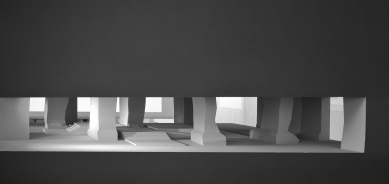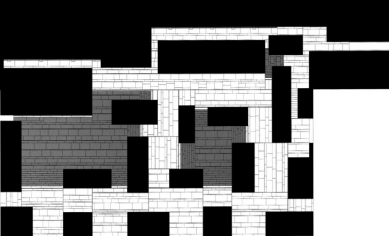
Cava Arcari

Cava Arcari is one of the many quarries to be found in the Berici hills of Vicenza. “Vicenza stone” is a calcareous rock that was deposited in the mid-Eocene and Oligocene periods in an environment that was first marine and subsequently lagoon. Extraction began in ancient times and was always carried out below ground as the stone had sedimented at between 250 and 350 metres below sea level. The method of extraction is called “room and pillar mining” with a main tunnel from which secondary tunnels branch out at right angles, all separated by pillars the dimensions of which are calculated to support the material above.
Right up to the 1950’s, extraction was performed manually using tools such as hammers and picks, creating a sort of channel around the block which was as wide and deep as the arm of the quarryman. It was detached by inserting and hammering home wedges and, once detached, levers and logs were used to slide the block along the ground or directly onto ox-drawn wagons, which were the only form of transport. The use of ever more advanced excavation and cutting machinery now allows for the creation of large and regular tunnels measuring eight by eight metres. The difference between the old and the new methods of excavation is very visible in the Cava Arcari.
Right up to the 1950’s, extraction was performed manually using tools such as hammers and picks, creating a sort of channel around the block which was as wide and deep as the arm of the quarryman. It was detached by inserting and hammering home wedges and, once detached, levers and logs were used to slide the block along the ground or directly onto ox-drawn wagons, which were the only form of transport. The use of ever more advanced excavation and cutting machinery now allows for the creation of large and regular tunnels measuring eight by eight metres. The difference between the old and the new methods of excavation is very visible in the Cava Arcari.
0 comments
add comment




